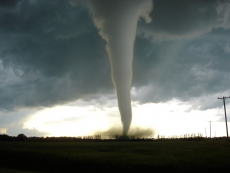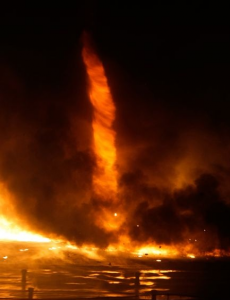
Often the feature of films and stories Tornadoes or as they are also known,Twisters, are a very real threat. A tornado is a column of air rotating rapidly and aggressively which touches both the earth and the base of a cumolonimbus cloud. These wind funnels move across the land channeled between ground and cloud for usually a few miles with wind speeds of around 100 miles per hour but some extreme twisters have been recorded to spin at over 300 miles per hour! These strong winds are capable of picking up and throwing almost amything in their path, even cars and heavy objects are picked up and thrown around like toys.
There are many variations of Tornado, for example some form over land, some over water and some have multiple vortexes. It is debated whether water spouts are technically tornadoes but they behave similarly and other such variations include dust devils, gustnados, steam devils and fire whirls. These different variations occur in different landscapes and sharp winds formed from sandstorms for example can be confused as a variation of tornado but they are technically not unless the funnel of wind is connected to a cumolonimbus cloud and the ground or in some rare cases the base of a cumulus cloud.

Tornadoes have occurred across every continent barring Antarctica but most take place in the US, particularly in the appropriately named Tornado Alley region. Storm spotters can usually spot these wind funnels before or as they form plus many buildings in the US are tornado proof that they are nevertheless a great threat still and can be incredibly destructive. The power of these Tornadoes is measured by damage caused via the Fujita scale. The weakest FO or EFO Tornadoes can damage trees maybe small structures but no real damage whilst an F5 or EO5 can destroy large buildings and even skyscrapers! Another scale of measuring Tornado power is the Torro scale shich ranges from T0 to T11.
For a challenge why not try reading this article and then seeing if you can remember the complicated cloud names that a Tornado comes from!

0 Comment:
Be the first one to comment on this article.